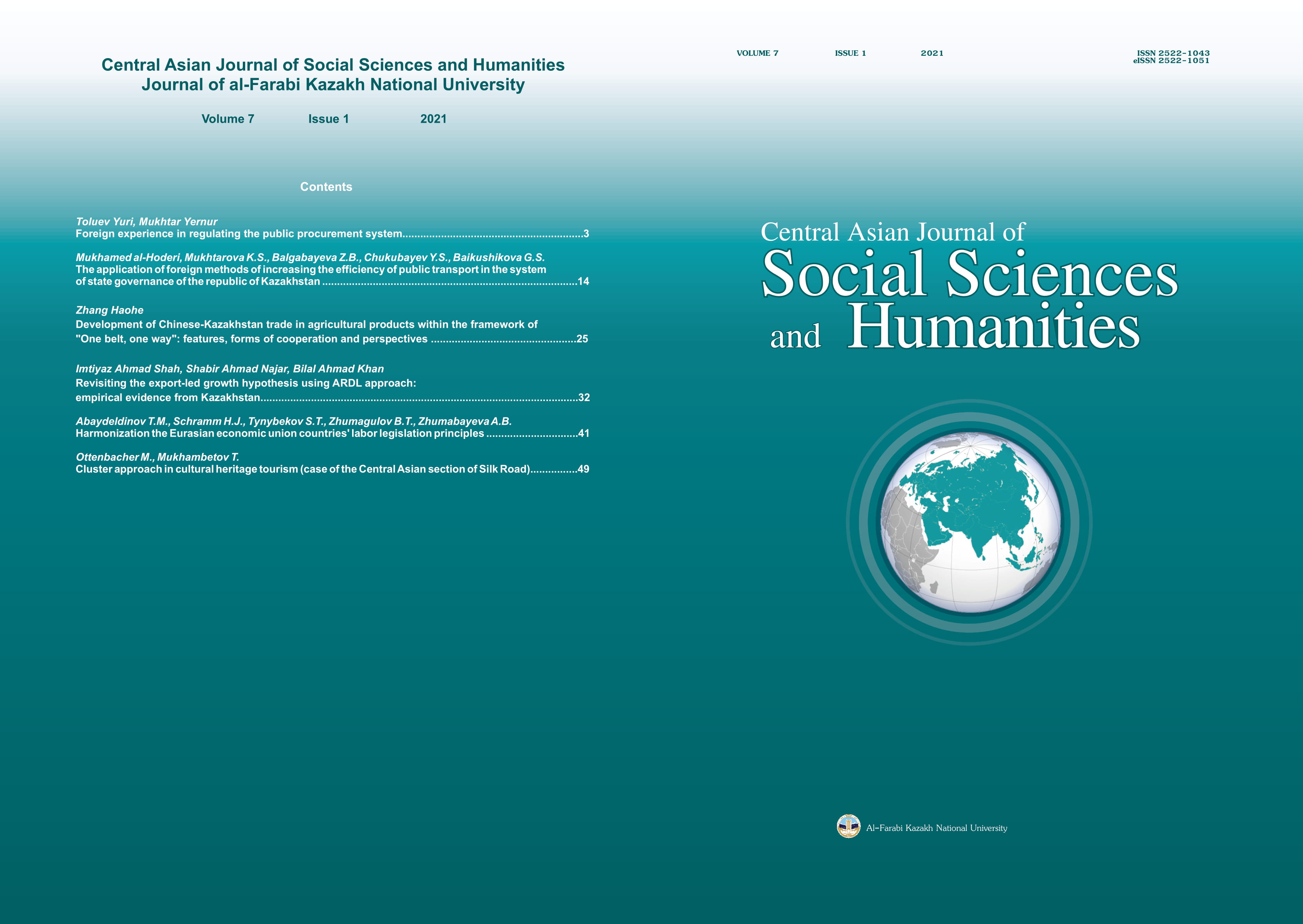REVISITING THE EXPORT-LED GROWTH HYPOTHESIS USING ARDL APPROACH: EMPIRICAL EVIDENCE FROM KAZAKHSTAN
DOI:
https://doi.org/10.26577/CAJSH.2021.v7.i1.04Abstract
The export-led growth (ELG) hypothesis believes that the economy's growth is determined by the growth of the labour force and capital formation and its export growth. According to neo-classical, ELG are essential for both developed and developing countries. It promotes economies of scale, increases labour productivity, availability of quality goods and services, increases employment opportunities, increases economic efficiencies, and increases economic growth. The effect of exports is determined through a neoclassical production function, examining exports' role after controlling the labour force and capital formation. The analysis is based ARDL model on testing for the short-run and long-run effects of independent variables. The long-run coefficient of exports is 0.38, while the short-run coefficient is 0.28 and statistically significant. Therefore, exports impact positively on G.D.P. per capita in both the short-run and long-run. Also, the coefficient of error correction term (E.C.M.) is negative and statistically significant, showing the speed of adjustment towards equilibrium from short-run to long-run. Therefore, Kazakhstan's government should increase exports that can increase the G.D.P. per capita better.
Key words: ARDL, exports, economic growth, Kazakhstan, capital formation.




